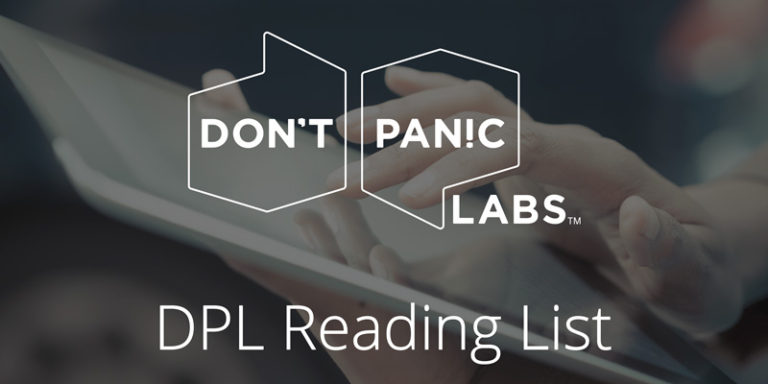
DPL Reading List – October 6, 2017
Here are some of the articles we’ve been reading around this office this week.
Research: For Better Brainstorming, Tell an Embarrassing Story – “Candor led to greater creativity. Thus, we propose a new rule for brainstorming sessions: Tell a self-deprecating story before you start. As uncomfortable as this may seem, especially among colleagues you would typically want to impress, the result will be a broader range of creative ideas, which will surely impress them even more.”
How to Remove the Roadblocks to Corporate Innovation – “Listening to this we realized that while the company had playbooks for execution, what was missing were specific processes for innovation.”
IoT’s Role in Natural Disasters like Harvey – “An early warning system is the central element in IoT response platforms used during natural disasters and their aftermath. With IoT technology based on open data and drones, cities are now more prepared than ever to manage disaster when it strikes. But nothing is as effective in preventing harm as an accurate early warning system and infrastructure that can withstand the weather.”
How to use storytelling in your startup – “Whether heartwarming or melancholy, exciting or profound, scary or inspiring, the more powerful the story, the more it tends to stick with us. Just think of your favourite book or a great movie you saw recently. Do you still feel something when you think of it? Storytelling isn’t only about fiction. When we talk or write about our work, our projects or, our startup ideas, we are telling a story.”
The Coming Software Apocalypse – “Just by editing the text in a file somewhere, the same hunk of silicon can become an autopilot or an inventory-control system. This flexibility is software’s miracle, and its curse. Because it can be changed cheaply, software is constantly changed; and because it’s unmoored from anything physical—a program that is a thousand times more complex than another takes up the same actual space—it tends to grow without bound.”
How do we use AI for our automated vehicles? Very carefully. – “The key for AI is training — and training means collecting massive amounts of data that can be used to help train the AI algorithms (neural nets) to perform their task. AI isn’t the right tool for every job, but AI can be used to make our systems much more capable and robust.”
IoT Needs Qualitative User Research – “Not conducting qualitative user research typically results in over-engineering a product, being solutions-focused, and generally making something that nobody wants.”



